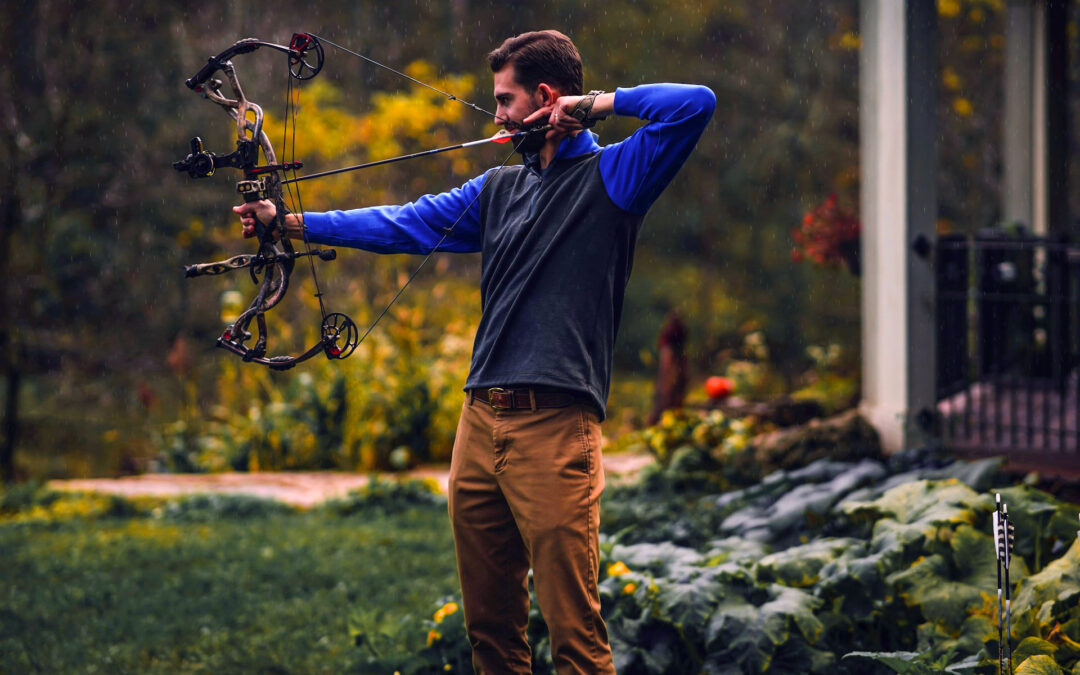Bow hunting is an exhilarating and rewarding experience that combines skill, patience, and a deep connection to nature. For those new to the sport, it can seem a bit daunting at first.
However, with the right knowledge and preparation, beginners can quickly build confidence and start enjoying this time-honored tradition.
Choosing the Right Equipment
1. Selecting Your Bow
- Compound Bow: Ideal for beginners due to its mechanical advantages, allowing for greater accuracy and less effort to hold at full draw.
- Recurve Bow: A more traditional option that requires more practice but offers a purer archery experience.
- Longbow: Best for enthusiasts who appreciate historical and traditional hunting
2. Arrows and Broadheads
Select arrows that are suitable for your bow’s draw weight and length.
- Use broadheads designed for hunting; fixed-blade broadheads are durable and reliable, while mechanical broadheads offer superior accuracy.
3. Accessories
- Bow Sight: Helps improve accuracy by providing reference points for
- Arrow Rest: Stabilizes the arrow and ensures consistent
- Release Aid: Reduces strain on your fingers and improves shot
- Quiver: Keeps your arrows organized and easily
- Rangefinder: Helps determine the exact distance to your
Mastering the Basics
1. Understanding Draw Weight
Draw weight is the force required to pull the bowstring back. Beginners should start with a manageable draw weight to develop proper form and technique without overexertion. Most states have minimum draw weight requirements for hunting, typically around forty pounds.
2. Practicing Form and Accuracy
- Stance: Stand with your feet shoulder-width apart, perpendicular to the
- Grip: Hold the bow lightly to avoid
- Anchor Point: Consistently draw the string to the same spot on your face or
- Follow Through: Keep your bow arm steady after releasing the arrow to ensure accurate
3. Building Muscle Memory
Practice regularly to develop muscle memory. Start with short sessions and gradually increase the duration as your strength and endurance improve.
Preparing for the Hunt
1. Scouting and Understanding Wildlife
- Study the habits and habitats of your target
- Look for signs such as tracks, bedding areas, and feeding
2. Obtaining the Proper Licenses
- Check local regulations and acquire the necessary permits for hunting in your
- Become familiar with seasonal restrictions and bag
3. Practicing Ethical Hunting
- Only take clear, ethical shots within your effective range (usually 20–30 yards for beginners).
- Ensure a quick, humane kill to minimize animal
4. Preparing for Field Dressing
- Learn how to field dress and process
- Invest in essential tools such as a sharp knife, gloves, and a game
Safety Tips
- Always inspect your equipment for damage before heading
- Use a safety harness if hunting from a tree
- Make someone aware of your hunting location and expected return
- Be mindful of your surroundings and ensure your shooting path is clear of
Bow hunting is a journey that requires dedication and practice, but it is also incredibly rewarding. By following this guide, beginners can build a strong foundation and enjoy the thrill of the hunt while respecting nature and wildlife.
Oak Creek Ranch offers a premier whitetail hunting experience that blends adventure, luxury, and unmatched opportunities to harvest trophy-class deer. From world-class genetics and expertly managed habitat to experienced guides and top-tier accommodations, Oak Creek Ranch is the gold standard for whitetail deer hunting.
For more insights on bow hunting and booking a hunting outing at Oak Creek Whitetail Ranch, visit https://oakcreekwhitetailranch.com.


Recent Comments